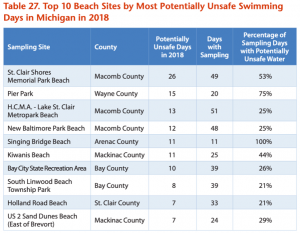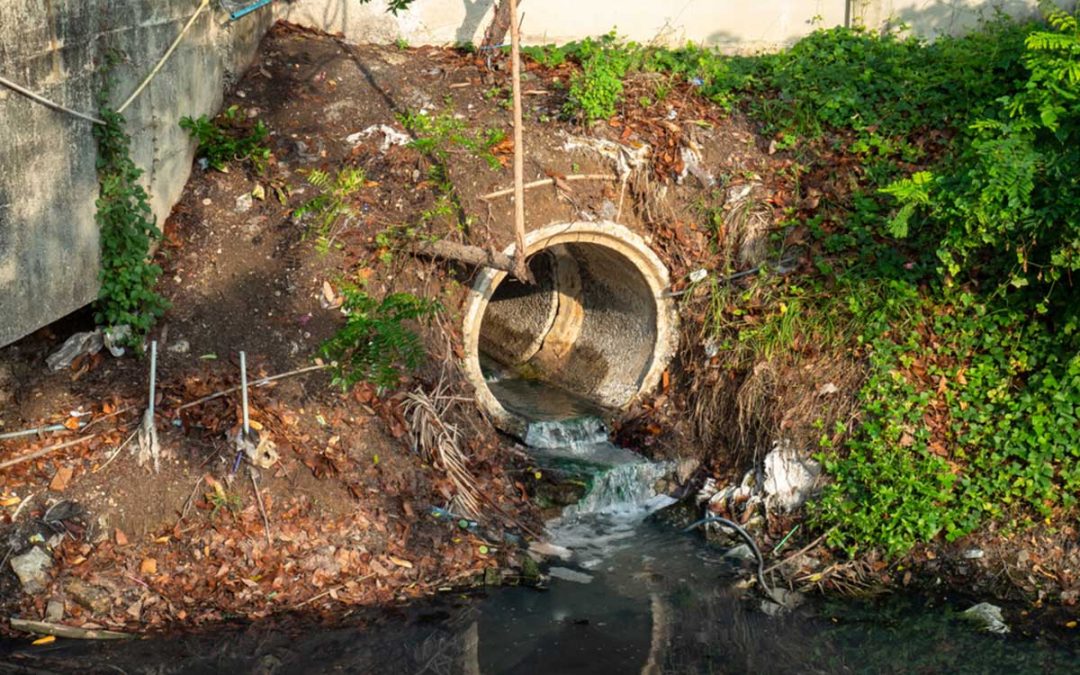A new study highlights just how unsafe some of Michigan’s beaches are for swimming.
The Environment America Research & Policy Center released a comprehensive look at beach pollution around the county.
The study looked at multiple pollution factors. An analysis of bacteria sampling data from beaches in 29 coastal and Great Lakes states and Puerto Rico reveals that 2,627 beach sites – more than half of all sites tested – were potentially unsafe for swimming on at least one day in 2018, and 610 sites were potentially unsafe at least 25 percent of the days that sampling took place. The top pollution causes were:
- Fecal contamination: Human contact with the contaminated water indicated by bacteria testing can result in gastrointestinal illness as well as respiratory disease, ear and eye infections and skin rash.
- Urban runoff: When rain runoff flows over yards, parks and other urban and suburban areas, it can pick up fecal waste from pets and wildlife. Runoff flows into streams, lakes and the ocean, either directly or indirectly through storm drains. The U.S. EPA’s most recent Water Quality Assessment data shows that the top two probable sources of impairments for coastal shoreline are municipal discharges/sewage and urban-related runoff/stormwater.
- Sewage overflows and failing septic systems: When sewage systems leak or overflow, human fecal waste spills into the environment and can contaminate waterways. Sewage contamination is particularly dangerous for public health because it contains human waste, which contains bacteria, viruses and parasites capable of causing disease in humans.
- Concentrated livestock manure: Most livestock is now raised in industrial-scale feedlot operations that generate large amounts of manure, which can contaminate water and make it unsafe for human contact.
Michigan beaches
According to the report, 120 tested beach sites were potentially unsafe for swimming on at least one day in 2018.
In 2018, 207 beach sites were sampled in Michigan. Of beaches where sampling took place, tests at 120 indicated potentially unsafe levels of contamination on at least one day.
A sampling site at St. Clair Shores Memorial Park Beach in Macomb County tested as potentially unsafe for 26 days, more days than any other site in the state, and 53 percent of the days that sampling took place.
Pier Park, in Wayne County, was potentially unsafe on 15 of 20 testing days, or 75 percent of the days that sampling took place. In Wayne County, the average beach was potentially unsafe for swimming on 75 percent of the days that sampling took place, a higher percentage than any other county in the state.
Here were the 10 beaches with the most unsafe swimming days in 2018:

Source: Click On Detroit
Here’s a look at the top 10 Michigan counties with the highest percentage of unsafe swimming days, according to the sampling:

Source: Click On Detroit
How is the unsafe level determined?
Sites were considered potentially unsafe if bacteria levels exceeded the U.S. Environmental Protection
Agency’s most protective “Beach Action Value” threshold, which the EPA suggests states use as a “conservative, precautionary tool for making beach notification decisions.
Read more at https://www.clickondetroit.com/michigan-water/gross-study-uncovers-10-michigan-beaches-with-most-bacterial-contamination.

